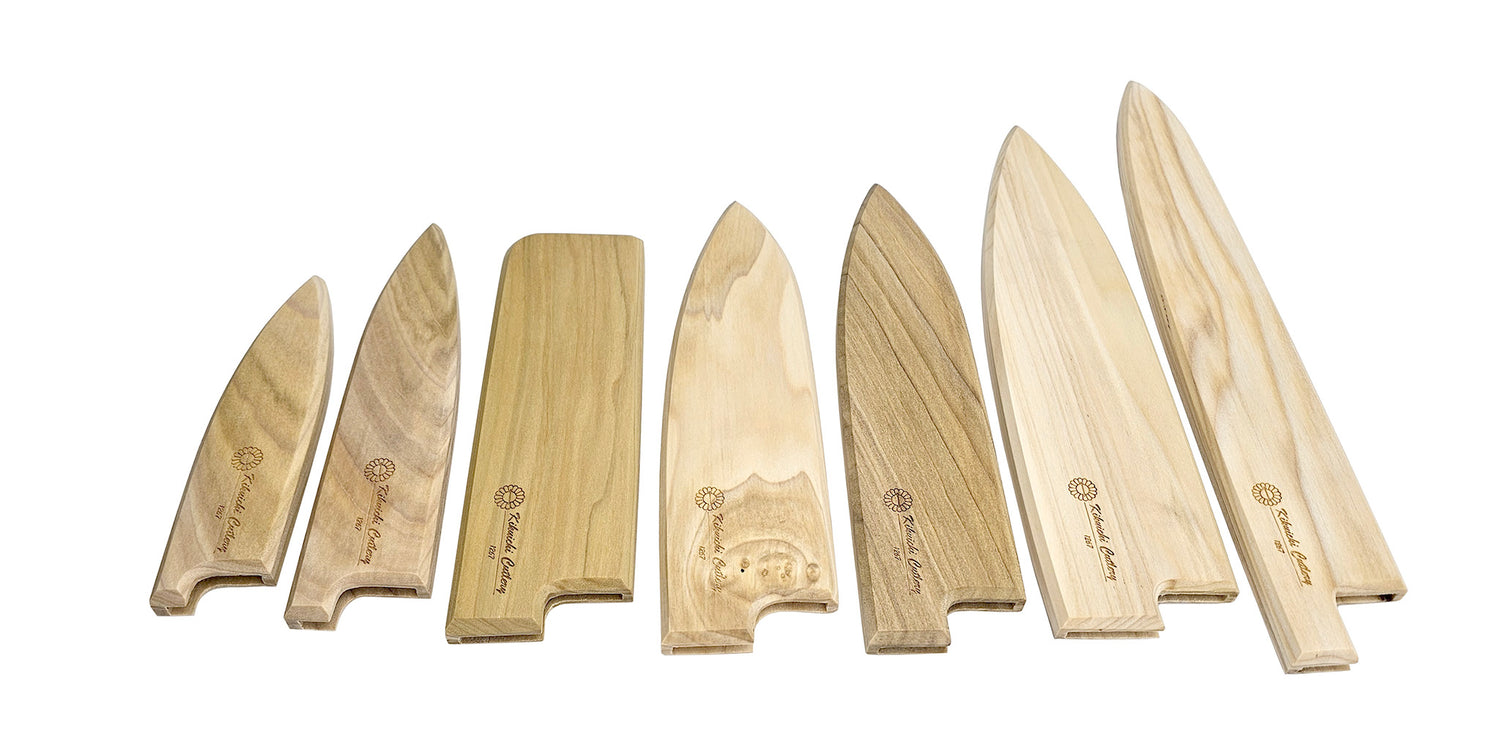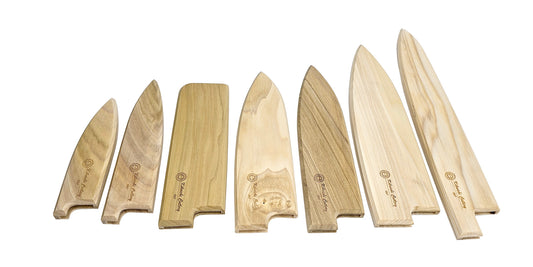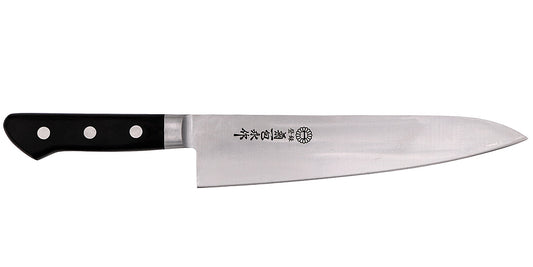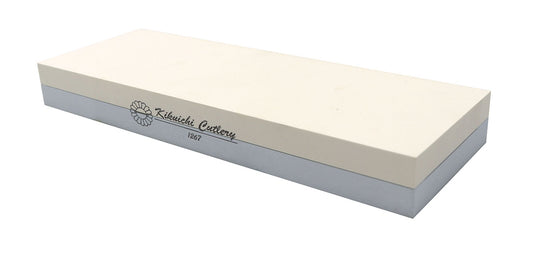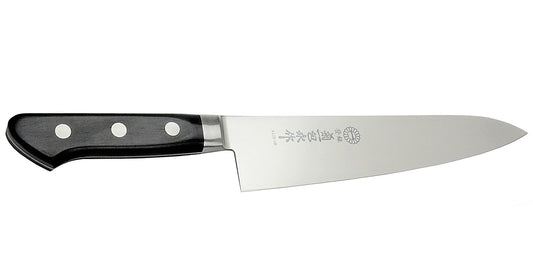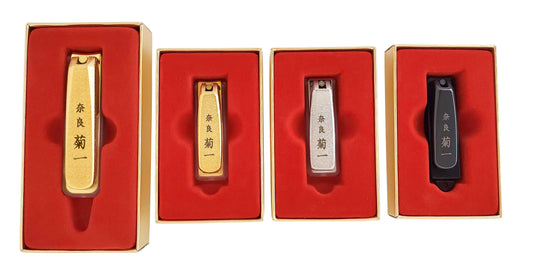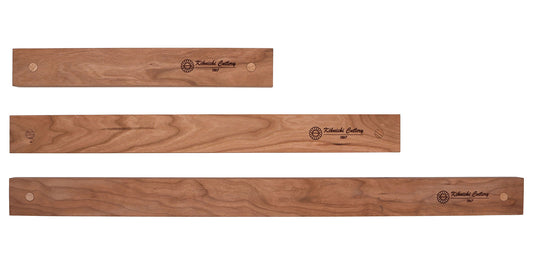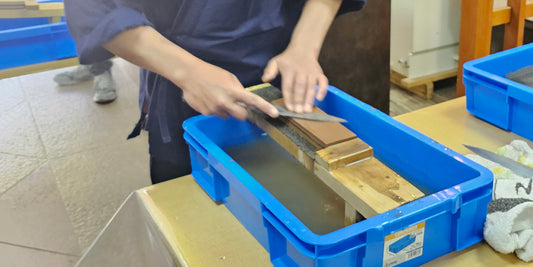Knife Shapes and Styles
Traditional Japanese Knives
Yanagi |
Yanagi (also called yanagiba or shobu) is the quintessential sashimi knife. It’s long and thin blade is suited for slicing delicate fish in a single stroke. May also be used for portioning other raw, boneless meats. Typical Lengths: |
Deba |
Deba is used for butchering and cleaning fish. The wide and thick blade is strong enough to withstand the force necessary to cut through fish skin and bones. The sharp edge allows fillets to be cleanly cut from the bones. Typical Lengths: |
Usuba |
An Usuba is the traditional vegetable knife in Japanese cuisine. The tall, thin blade can be used to peel, slice, chop, mince, and make decorative cuts. Three typical usuba shapes are Azumagata (rectangular shape; most popular), Hishigata (pointed tip), and Kamagata (slightly curved spine as it approaches the tip). Typical Lengths: |
Takohiki |
Like a yanagi, a Takohiki has a long, thin, sharp blade that is suited for slicing delicate fish in a single stroke. Known as a Kanto-style sashimi knife, the tip of the blade is squared-off which some chefs like as they can more safely place sashimi directly on a customer’s plate. Typical Lengths: |
Fuguhiki |
Designed to achieve ultra-thin slices of fugu, a Fuguhiki has a blade similar to that of a yanagi, but much thinner. It is preferred by some chefs as an all around sashimi knife due to its thinness. Typical Lengths: |
Bunka |
A Bunka is a Japanese style chef's knife that is double beveled like a western blade. The long, wide blade and a reverse tanto gives it an angular tip. It is ideal for slicing, chopping, and precision work, It’s the evolutionary precursor of the modern santoku. Typical Lengths: |
Funayuki |
A Funayuki is a short, all purpose knife that was historically used by fishermen while at sea. The profile of the blade is similar to that of a deba but thinner; making it an excellent all purpose knife. Typical Length: |
Kaisaki |
A Kaisaki has a short blade that somewhat resembles a miniature yanagi. It was originally designed for the preparation of shellfish but over time, chefs have adopted it for garnish preparation. Typical Length: |
Kawamuki |
With its short blade, the Kawamuki was designed for in-hand tasks such as peeling and garnish preparation. It has a short double beveled edge like a Western paring knife. Typical Length: |
Western Style Knives
| Gyuto |
The Gyuto, or chef's knife, is the most important knife for nearly all chefs. The long, pointed blade is used for slicing, chopping, and precision work. This is most similar to a German or French chef’s knife. Typical Lengths: |
Sujihiki |
Like a Gyuto but shorter at the heel, a Sujihiki is ideal for clean and precise slicing. It can be used with meat and vegetables, and even sushi rolls. Typical Lengths: |
Santoku |
The Santoku is a kitchen’s all-purpose knife. The blade is tall at the heel and less pointed at the tip. A Santoku excels at performing quick slicing, chopping, and mincing tasks. It is the most common knife found in a Japanese home. Typical Lengths: |
Petty |
A Petty knife has short blade with a shape similar to gyuto. It is designed to perform small cutting tasks and precision work on a cutting surface. Some chefs also use a petty knife for in-hand tasks. Typical Lengths: |
Nakiri |
Similar to an Usuba, a Nakiri is a double beveled vegetable knife with a tall, thin blade. It is used to peel, slice, chop, mince, and make decorative cuts. Typical Lengths: |
Paring |
A Paring knife has short blade and is used for in-hand tasks such as peeling, carving, and decorative cuts. Typical Length: |
Bird’s Beak |
A Bird’s Beak knife has a short, curved blade which is ideal for in-hand tasks such as peeling, coring, and decorative cuts. It is similar in size to a paring knife. Typical Length: |
Honesuki |
The Honesuki was designed specifically for breaking down poultry and is a yakitori chef’s main prep tool. It’s thick blade and pointed tip can easily cut through joints and make precise cuts. While the blade is strong enough to hit bone without chipping, it should not be used to chop through bone. Typical Length: |
Hankotsu |
The Hankotsu is commonly used to break down large carcasses, either hanging or on a surface. The short blade is used to precisely cut along bone, fat, and connective tissue. While the blade is strong enough to hit bone without chipping, it should not be used to chop through bone. Typical Length: |
Start Your Kikuichi Journey Today
-
Universal Wooden Magnet Saya
Regular price From $30.00 USDRegular priceUnit price / per -
GC Series Carbon Steel Gyuto
Regular price From $120.00 USDRegular priceUnit price / per -
WATER STONE 1000/6000 grit
Regular price $75.00 USDRegular priceUnit price / per -
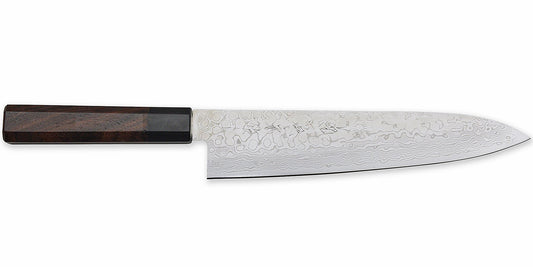 Sold out
Sold outNWD Nickel Warikomi Damascus Gyuto
Regular price From $390.00 USDRegular priceUnit price / per -
GM Series Molybdenum Stainless Steel Gyuto
Regular price From $180.00 USDRegular priceUnit price / per -
Nail Clipper w/ Gift Box
Regular price From $40.00 USDRegular priceUnit price / per -
Magnetic knife Bar
Regular price From $40.00 USDRegular priceUnit price / per -
Warranty Knife Sharpening
Regular price From $15.00 USDRegular priceUnit price / per
